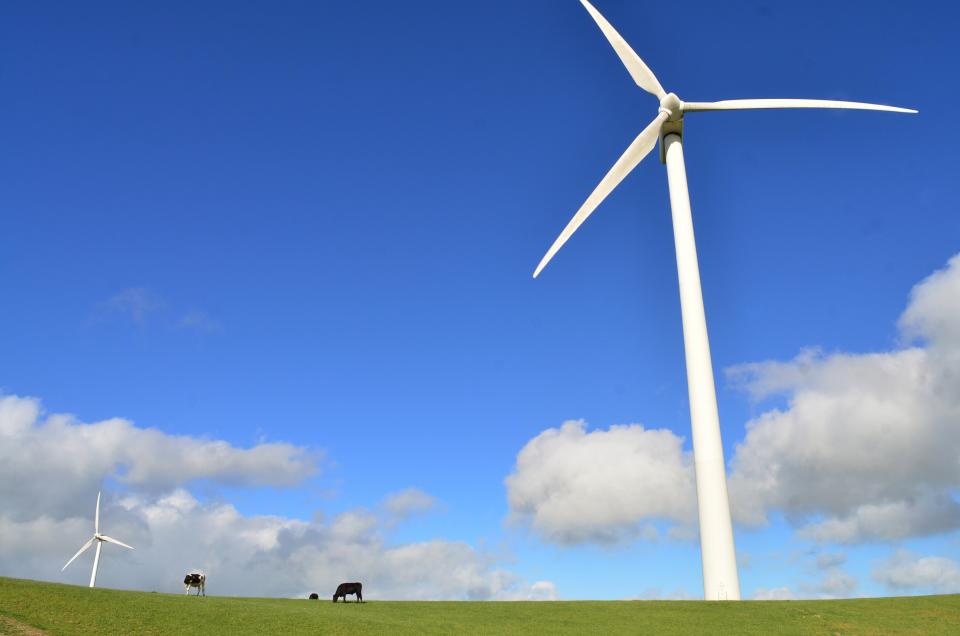Green energy: what does it mean and how can it help you?

Renewable or ‘green’ energy tariffs have become increasingly popular in recent years on the back of rising concerns about climate change and carbon dioxide emissions.
But if you’re not exactly sure how green energy works or how it could benefit you, here’s what you need to know.
What is a green energy tariff?
Choosing a green energy tariff doesn’t mean that you’ll have 100% renewable energy supplied to your home. In fact, you’ll get your electricity from the National Grid in exactly the same way as you would with any other tariff.
But what it does mean is that your supplier will match some or all of the electricity you use with the amount they buy from renewable energy generators.
This renewable energy is then fed back to the Grid. So, the more people that sign up to green energy tariffs, the more renewable energy is fed back to the Grid and the more it benefits the environment.
Related: Switch & Save Using Our Energy Comparison Service
Where does green energy come from?
There are several different ways green energy is generated:
Solar: solar panels absorb sunlight which is converted into electricity
Wind: wind turns the blades of a turbine around a rotor to create electricity
Hydroelectric: the energy of flowing water is captured through a wheel or turbine to generate electricity
Wave: the energy of waves in the oceans, rivers or lakes is captured to generate electricity
Biomass: energy is generated by burning or fermenting organic material such as wood pellets or grass clippings
Geothermal: heat created within the earth’s core is harnessed to create electricity
Tidal: energy is converted from the tides into electricity
What are the benefits of choosing green energy?
The main benefit to choosing green energy is that it’s far better for the planet. Choosing a green energy tariff will ensure more renewable energy is exported back to the National Grid, reducing our reliance on non-renewable sources.
Non-renewable or ‘brown’ energy comes from fossil fuels that release carbon dioxide into the atmosphere. The continued use of this form of energy has contributed to global warming, extreme weather and the extinction of several species.
How green is my supplier?
When comparing green energy tariffs, you’ll need to take care as some suppliers are ‘greener’ than others.
Energy suppliers must, by law, publish details of their fuel mix so you’ll be able to find out what percentage of the electricity they generate comes from renewable sources and what percentage comes from other sources such as coal, gas and nuclear power. This must be updated at least once a year.
The Energy Saving Trust highlights Ecotricity, Good Energy and Green Energy UK as being three of the greenest energy suppliers in the industry. The reason for this is that they get all of their electricity from renewable generators such as wind and solar farms.
Other suppliers, meanwhile, have deals with both green and non-renewable energy generators, while some even buy excess Renewable Energy Guarantee of Origin (REGO) certificates – which certifies the energy as being green – without actually buying any renewable energy.
You may also come across green funds, where you pay a premium for an energy tariff to contribute to a fund supporting renewable energy projects.
It therefore pays to do your research and check exactly how green your chosen supplier is before signing up. You can find further information on the Energy Saving Trust website.
Are green energy tariffs cheaper?
When green energy tariffs were first launched, they were typically priced much higher than standard tariffs as a result of the costs associated with investing in renewable technology.
In recent years, however, as more green tariffs have launched onto the market, the price difference between the two tariff types has shrunk considerably. Part of the reason for this is the rising number of so-called ‘challenger’ brands such as Ecotricity, Pure Planet and Octopus. These have boosted competition in the market and forced the bigger suppliers to push prices down.
How do I compare green energy tariffs?
You can compare green energy tariffs in just the same way as standard energy tariffs. All you need to do is use a comparison service and enter a few details about the name of your existing tariff and supplier, plus the amount of gas and electricity you use per year (either in kilowatt hours or pounds).
You’ll be able to find this information on your latest energy bill.
Once you’ve entered the required information you’ll be able to view a range of different energy tariffs and select ‘green plans’ only. When you’ve found the right tariff to switch to, click through and enter a few more personal details to confirm the switch. Your new supplier will then take care of the rest of the switching process.
Can I generate my own green energy?
If you want to do much more than simply switch to a green energy tariff, you could also consider generating your own green energy. Ways to do this include:
Solar panels or photovoltaics (PV)
Wind turbines
Hydro power (if you live near a river or lake)
Micro combined heat and power - where heat and electricity are generated simultaneously from the same energy source
Anaerobic digestion – where organic material is broken down to produce a methane and carbon dioxide-rich gas which is burnt to produce energy.
If you use any of these renewable technologies, you may be able to apply for the Smart Export Guarantee (SEG) scheme which pays you for any excess renewable electricity you export back to the National Grid. This replaced the government’s feed-in-tariff scheme which closed to new applicants in March 2019.
To qualify you’ll need to sign up to a SEG tariff and your installation must be 5MW capacity or less, or 50MW for micro combined heat and power. It must also be certified under the Microgeneration Certification Scheme (MCS) or equivalent.

 Yahoo Sport
Yahoo Sport 





































